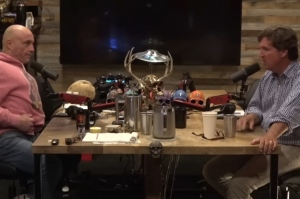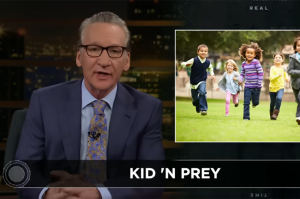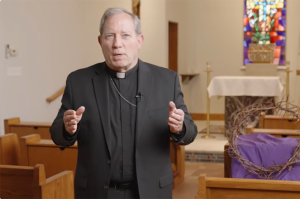Kennedy and Me (Pt. 2)
This is the second in a three-part series entitled, "Kennedy and Me." Part one can be read here.
A new normalcy shattered
After the campaign and inauguration, I went back to being a kid. I didn't follow politics closely, though there was always talk at the dinner table about Kennedy's actions on this and that. I did notice that mom and her sisters and friends got new hairdos. They were dead ringers for Jackie Kennedy's "do." My mother was a strikingly beautiful brunette, and everyone agreed she had some of Jackie's features, which were highlighted all the more by her imitation of Jackie's French bouffant. Millions of women followed the styles set by the new first lady. That certainly hadn't happened under Eleanor Roosevelt, Bess Truman or Mamie Eisenhower.
I finally got to go to Washington for the first time at age nine in the summer of '62. The family made a beeline for the White House, and we took photos aplenty outside the gates, all the while speculating on what the Kennedys were doing inside, if they were inside. I was determined to get as close as possible, so I pressed into the gate - and managed to get my knee stuck between the bars. Two White House policemen, one inside the grounds and one on the sidewalk, came to the rescue and after a few minutes of pulling the bars apart and tugging on my leg, it came free. This was embarrassing, and a crowd gathered, but I had my self-deprecating theme for the traditional "What I Did Over the Summer" essay in September.
Then there was the Cuban Missile Crisis. Even children paid attention, and we were scared. At least I was. We lived less than a mile from the largest naval installation in the United States, and though no one had seen the Soviet Union's strategic targets, we had a pretty good idea that we were in the bull's-eye for a Russian nuclear bomb. No one believed that "duck and cover" would save us, though we did the school drills required by the civil defense program. Far worse to me in October 1962, dad would not be able to evacuate with us due to his position at the base. I still remember that we packed up the family car so everyone but dad could high-tail it out of town to my mother's relatives in rural far Southwest Virginia, if and when an attack was thought imminent. I had nightmares and I'm quite sure other kids did too, though in those days we didn't talk about our feelings much. Oprah and Dr. Phil hadn't been invented. Fortunately, the crisis was peacefully resolved after the two superpowers came within a hairsbreadth of destroying the world. Life returned to normal, even if it was a scarier normal.
As Kennedy's presidency wore on, the uniqueness of it wore off. This is true for all leaders. The radical notion of an African-American president in January 2009 now seems ordinary and expected. After almost three years of JFK, it had become obvious to everyone but the peculiarly hardheaded that the Pope was not calling the shots in Washington. Kennedy's Catholicism was mentioned less frequently by Catholics and non-Catholics alike.
In the late fall of 1963, young minds were sharply focused on Thanksgiving and the religious season of Advent, with Christmas barely a month away. I don't remember anything about Friday, Nov. 22, 1963, until there was a knock at the door of my sixth grade classroom a little after 2 pm EST. Our classes were rarely interrupted, and Sister Robert Miriam of the Immaculate Heart of Mary order looked startled, even though we could see only the frame of her face behind the heavy black and white habit that covered every other square inch of her body. I can see her clasping a hand across her chest, as though her heart had skipped a beat. The sister motioned for silence - not an easy thing to achieve in a classroom with 62 boys. (We were separated by gender in those days, and a lack of funds created a room so crowded that it is incredible to think that one nun could teach us all. But she did, quite well, aided by corporal punishment that was frequently employed to keep us in line.)
Sister Robert stepped out of the classroom, and when she came back in a minute later, she was clearly in distress. "Children, I have terrible news. President Kennedy has been shot in Texas." The class gasped as one. Unaware that the president was already dead, she said, "He is still alive and we must pray for him. Take out your rosary beads." Rosaries were standard equipment in a Catholic school of 1963, and we lifted our desktops and grabbed our beads. Led by Sister Robert, we began the series of Hail Mary's and Our Father's as we held onto each bead for dear life.
Perhaps 20 minutes later, a second knock stopped us cold and we held our breath. Sister Robert had to say nothing. Her tears told the story. We sat in stunned silence, which gave way to widespread sobbing. Someone from the main office came onto the old-style public address system - a speaker inside a brown wooden box mounted on the wall - and intoned, "The President of the United States is dead," he repeated twice. "Please pray for the repose of President Kennedy's soul. School is dismissed. Gather your things quietly and wait on the breezeway for the buses or your parents." At my locker, collecting my belongings, I remember saying to a friend, "He was the only Catholic president and he didn't even live to finish his term." It was perhaps an odd way to instantly interpret the assassination, but I think this reveals how and why the impact was so intense for many Catholics. To this day, Kennedy has been the only Catholic chief executive.
My mother was already waiting in the car to pick up my cousin Donna and me. She had had the day off from work, and was grocery shopping, when a friend came up to her and blurted out, "Oh Margaret, it's awful. Have you heard? President Kennedy's been shot." Mom was as orderly a person as has ever lived, but she left a half-full cart in the aisle and ran out into the street to try to call my Dad on a pay phone. The lines were already overloaded and she couldn't get through, so she hopped into the car and drove to my school. So did every parent who was free. The buses went out half-empty. People needed to gather their families together as quickly as possible for emotional support - and to gird for what lay ahead.
With the Cuban Missile Crisis just 13 months old, more than a few people feared that a Soviet nuclear first-strike could follow the assassination. (The new president, Lyndon Johnson, had the same thought.) Fortunately, my family knew early that this threat was false. After driving from school to my aunt's house, my mother reached my father, who calmed her by saying that most people were being sent home from the naval base to be with their families. Had there been any realistic suspicion of a Soviet attack, all personnel would have been kept on the base.
With telephone service spotty, everyone gathered around the television set, and the natural choice was CBS's Walter Cronkite, who was thought to be close to JFK even then and who had been on the air within minutes of the shots in Dallas. CBS re-played the terrible moments when Cronkite announced the death of the president. The long pause to control his emotions as he took his eyeglasses off and put them on again captured the extreme distress we all felt.
Television was our link through four sad days in November, a combination church and town hall, providing news, instant history, and comfort. As a relatively new medium, it had never performed these roles before, though it would forevermore at times of national calamity. We sat and watched and cried, with normal routines suspended - save for special Requiem Masses through Monday, Nov. 24, a national day of mourning. With the quick capture of Lee Harvey Oswald, law enforcement officials appeared to answer the whodunit. (That wouldn't last long.) We focused instead on the dinner-time landing of Air Force One, containing the body of President Kennedy. Everyone has seen the film so often that it is difficult to recall the shock of our first glimpse of the coffin and Mrs. Kennedy, still in her blood-stained pink suit, with Bobby Kennedy at her side. We were completely unaware of the turmoil on the plane, or the first actions of new President Johnson, or the icy lack of civility between RFK and LBJ.
It was jarring to hear Lyndon Johnson, president for just a few hours, step up to the microphones and make his short, simple statement about the "loss that cannot be weighed," while pledging to "do my best." The photo of the oath-taking on Air Force One had already been shown, of course, and we knew the reality of presidential succession. Yet Johnson's lined jowly visage, slow Texas drawl, and lack of rhetorical polish, not to mention the sight of Jackie's able but dowdy replacement, Lady Bird Johnson, was another cold shower on an already chilled evening. "I'm sure he's a good man," said my Dad hopefully, "but he's no John Kennedy." It is difficult to believe today, in an era when vice presidents receive so much attention, that a poll taken just weeks before the assassination showed a majority of Americans had no opinion at all about Johnson. This was despite his many years as Senate majority leader and vice president. I would wager that many television viewers had never before heard Johnson speak, except perhaps to take the oath of office in January 1961.
"This is no accident. They want Oswald dead."
The TV networks signed off around midnight, not having the personnel or capacity to do the 24-hour coverage to which we are now accustomed in crisis. On Saturday we learned bits and pieces about the shooting in Dallas and the plans for President Kennedy's viewing and funeral. It was a day for coping as the immediate shock wore off. My mother frequently called her sisters and cried. We were starting to get a picture of Lee Harvey Oswald, who was offering statements to a press gaggle as he was shuttled from place to place. Dad made trips to the newsstands for the instant commemorative editions of newspapers and magazines - even a record album of JFK's speeches. We were hungry for news and remembrance, and the opportunity to make a buck had not gone unnoticed.
The stabilizing picture was obliterated on Sunday, when the first live murder took place on television. Everyone is familiar with the film clip of Oswald being mortally wounded by Jack Ruby, and unfortunately live violence is very common on TV today. In 1963, though, it was an unknown fright. My father and I were watching and couldn't believe our eyes as a startled reporter yelled, "He's been shot! Lee Oswald's been shot!" My father called for my mother to come back to the TV; she was shaking as we told her what had happened.
At first blush, most people watching probably thought or uttered, "Oswald got what he deserved." It was said in my household. But after a few minutes, Dad said something else that was heard in almost every home and has echoed through the decades: "This is no accident. They want Oswald dead." Who were "they?" It was unspoken then, and a hundred theories have been floated to uncover "them" since. To most Americans, even in that naïve era when one really didn't question authority much, it seemed too convenient, right from the start.
An industry was born as Oswald died.
Now, the nation had combined a modern Shakespearean tragedy with a real-life episode of "The Twilight Zone," the popular sci-fi TV show of the day. The networks cut back and forth between Kennedy coverage and Oswald's murder, as the Keystone Kops running the Dallas police department tried to explain what had happened.
Monday was solemn, as funeral marches must be. The long procession to Arlington, the riderless horse, the drums and mournful sounds, the weeping thousands everywhere, the lighting of the eternal flame - these are images never forgotten by Americans alive at the time. Jacqueline Kennedy's courage and grace touched everyone, a widow at 34, covered in black. John-John's salute to the flag as his father's coffin passed left an entire nation sobbing. "Those children, fatherless forever…"
Thanksgiving occurred just three days later. It was the saddest holiday most people could remember. My large Italian-American family gathered at my Great-Aunt Mary's for the usual feast of turkey and pasta. There was only one topic of conversation the whole day, as uncles and nieces and cousins exchanged views. What I most remember, other than the sorrow, was the unanimity of belief in a conspiracy. Literally no one thought Oswald had acted alone. And for the first time, I heard the cynicism that was to spring from Nov. 22, 1963. "We'll never find out the truth. The government will hush it up."
The view toward conspiracy quickly hardened, and nearly guaranteed a negative reception for the Warren Commission report when it was released in September 1964. Throughout the last month of 1963 and most of 1964, small details and occasional photos of Nov. 22 leaked out, but there was no gusher. We had only a relative handful of photographs of the actual assassination scene, and some color film of the Kennedy arrival in Dallas.
The Zapruder film had been taken by the government and was under lock and key for the official investigation. It was years before the public realized just how gory the shooting really was. Many frames of the Zapruder film appeared in Life magazine on Nov. 25, 1966 - but the editors published only the ones preceding the fatal head shot. It wasn't until March 1975 that the public had an opportunity to view Zapruder's historic piece.
We were told repeatedly that Mrs. Kennedy had climbed on the back of the presidential limousine to get help from the Secret Service, when in fact she was trying to retrieve portions of her husband's skull or brain. It was a very different time; the American public was not deemed mature enough to handle the gruesome facts, and most people didn't demand much additional information from the media or government. We took what we were given, assuming that wiser heads had made appropriate decisions in our best interests. This kind of deference is utterly foreign to Americans in the 21st century.
This article was first published at Sabato's Crystal Ball.




























